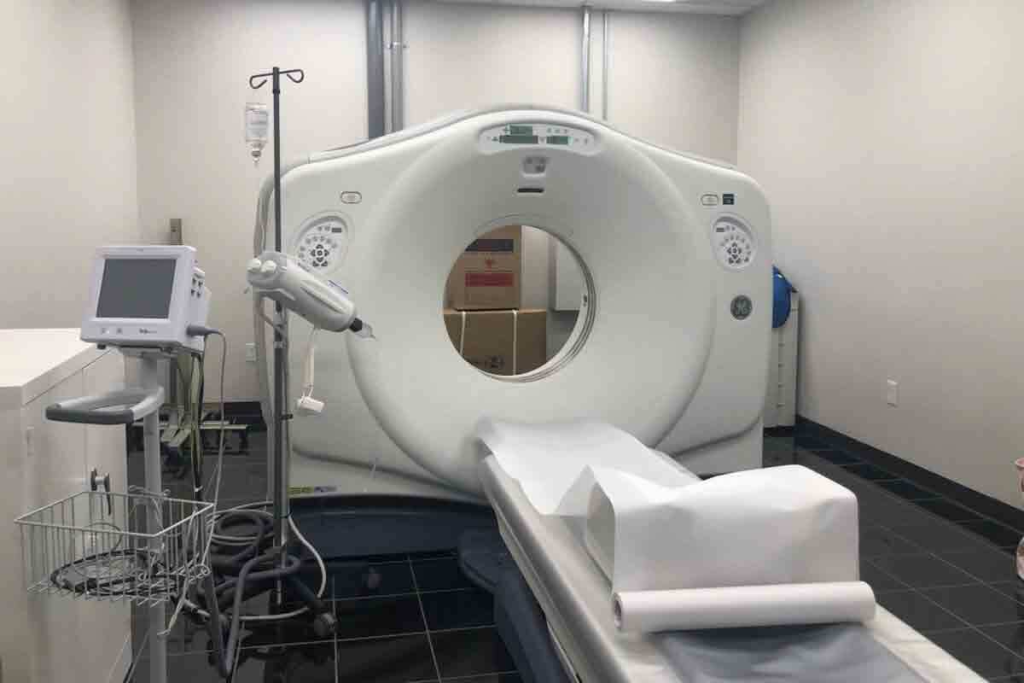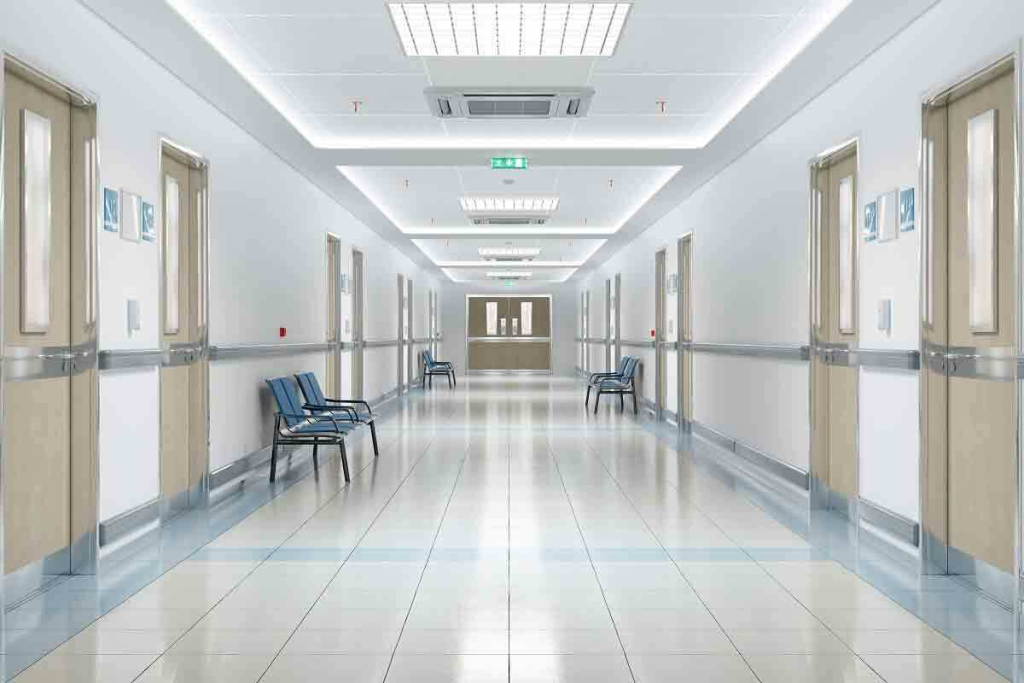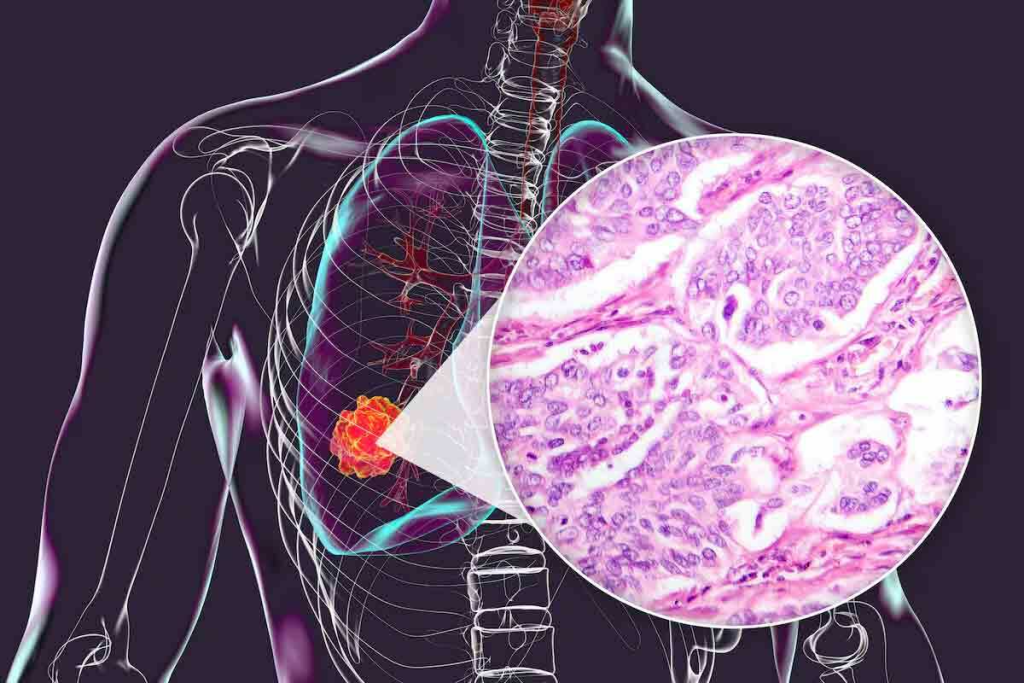
At Liv Hospital, we use the latest CT technology for accurate diagnoses. Do CT scans show inflammation? Yes, CT scans are highly effective in detecting inflammation as they provide detailed images of tissues and organs. This helps our skilled doctors spot signs of inflammation and infection, such as swelling, fluid buildup, or tissue changes. The precision of CT imaging plays a crucial role in diagnosing conditions like appendicitis, abscesses, and other inflammatory diseases, ensuring timely and appropriate treatment.
CT scans show changes in body structures. This lets us give exact care to our patients. We focus on global best practices and medical innovation in our care.

Medical imaging has made big strides with CT scans. These scans let doctors see inside the body clearly. They look at the chest, abdomen, pelvis, and limbs.
A CT scan, or Computed Tomography scan, uses X-rays from different angles. It makes detailed pictures of the body’s inside without surgery.
Key benefits of CT scans include:
CT technology makes detailed images by combining X-ray data. Here’s how:
Research on the National Center for Biotechnology Information shows CT scans are key in medical diagnostics. They give detailed views of internal anatomy.
Knowing how CT scans work helps us see their importance. They help diagnose and track health issues like inflammation and infection.

CT scans can spot inflammation by showing detailed images inside the body. This skill is key to finding and tracking inflammation in different parts of the body.
Inflammation changes how tissues look. CT scans can see these changes, like swelling or density shifts. This helps doctors understand how bad the inflammation is.
For example, a CT scan can spot lung inflammation. It shows up as consolidation or ground-glass opacities. In the belly, it can find signs like thickened bowel walls or fat stranding.
Inflammation makes tissues denser and fills them with fluid. CT scans can see these changes well. They help find where fluid has built up or tissue density has changed.
CT scans can also find infections like abscesses or fluid collections. They can tell the difference between types of fluid, helping diagnose issues like peritonitis or pancreatitis.
CT scans are very important for diagnosing and treating inflammation and infections. They give doctors the info they need to make the right treatment plans. This ensures patients get the care they need.
We look into how well CT scans show inflammation and the proof ththat they work. CT scans are key in medicine for spotting inflammation.
Recent studies show CT scans are vital for finding inflammation. They help tell apart infection, inflammatory diseases, and cancer. The scans give detailed images of tissues, showing changes and fluid buildup linked to inflammation.
Evidence from Clinical Studies
Many studies prove that CT scans are good at finding inflammation. For example, a study in a top medical journal showed that CT scans help with inflammatory bowel disease.
| Study | Findings | Implications |
| Smith et al. (2020) | CT scans accurately detected inflammation in 95% of patients with suspected inflammatory bowel disease. | CT scans are highly effective in diagnosing inflammatory bowel disease. |
| Johnson et al. (2019) | CT imaging helped differentiate between infectious and non-infectious causes of inflammation in 90% of cases. | CT scans aid in targeted treatment by identifying the cause of inflammation. |
Though CT scans are great, they have some downsides. They can sometimes show false positives, looking like inflammation but not being. Also, they use radiation.
Improving Diagnostic Accuracy
To get around these issues, doctors use CT scans with other tests and their own observations. This mix makes finding inflammation more accurate and helps choose the right treatments.
CT scans can spot infections by showing detailed pictures of the body’s inside. This helps doctors find and treat infections better.
Infections show certain signs that CT scans can spot. These include swelling, abscesses, or fluid buildup. Research on NCBI shows CT scans are great at finding these signs.
Key Features of Infections on CT Scans:
CT scans can find many infections in different body parts. For example, they can spot abscesses, diverticulitis, and appendicitis in the abdomen. These clear images help doctors understand how big the infection is and what treatment to use.
Some common infections and conditions detected by CT scans include:
| Condition | Description |
| Appendicitis | Inflammation of the appendix often requires surgical intervention. |
| Diverticulitis | Inflammation of diverticula in the colon can lead to complications if not treated. |
| Abscesses | Collections of pus that can occur in various parts of the body, including the abdomen and lungs. |
CT scans are key in finding and treating infections. They give doctors the info they need to make the right treatment plans. This helps patients get better faster.
CT scans are key for spotting inflammation and infection in the chest and lungs. They give us detailed views of our patients’ respiratory health.
A chest CT scan is great for looking at the lungs, airways, and nearby tissues. It can spot many issues, from infections and inflammatory diseases to serious problems like lung cancer or pulmonary embolisms.
A chest CT scan gives a full view of the chest area. It shows:
Pulmonary inflammation and infection can show up in different ways on a CT scan. We look for signs like:
The table below lists the main things we look for in a chest CT scan to spot inflammation and infection:
| Condition | CT Scan Findings |
| Pulmonary Inflammation | Increased density, ground-glass opacities |
| Pneumonia | Consolidation, air bronchograms |
| Abscess | Fluid collection with rim enhancement |
By studying these signs, we can accurately diagnose and treat chest and lung issues. This helps us give our patients the best care possible.
CT scans are key in finding inflammation in the belly’s organs. They give us clear images to spot different inflammation issues. The belly holds important organs like the liver, kidneys, and intestines. These can get inflamed due to infection, injury, or disease.
“CT scans are great for seeing how much inflammation there is and its effect on nearby tissues,” says medical research. Knowing this helps us plan the best treatment.
The liver, kidneys, and intestines often face inflammation. A CT scan can show why someone has jaundice or find liver tumors. Liver inflammation, or hepatitis, can come from infection, toxins, or autoimmune issues. Kidney inflammation, or nephritis, might be due to infection or other diseases.
CT scans can also spot problems in the intestines. For example, they can find inflammatory bowel disease (IBD), which includes Crohn’s disease and ulcerative colitis. These diseases cause long-term inflammation in the gut, leading to pain, diarrhea, and weight loss.
CT scans are very good at finding appendicitis when the appendix gets inflamed. Quick diagnosis is key to stopping sstoppingthe appendix from bursting, which can cause serious problems. Diverticulitis, where the colon’s diverticula get inflamed, is also diagnosed with CT scans.
Other conditions like pancreatitis, an inflammation of the pancreas, and peritonitis, an inflammation of the peritoneum, can also be found. Accurate diagnosis is vital for the right treatment and to avoid more issues.
CT scans are key in finding musculoskeletal inflammation. They give detailed views of the affected areas. This is important for treating muscles, joints, and bones correctly.
Yes, a CT scan can spot muscle inflammation. It’s great when other tests like ultrasound or MRI don’t work. CT scans show muscle anatomy cleadetectand can find inflammation, swelling, or damage.
Using CT scans for muscle inflammation has many benefits:
CT scans are also good for finding inflammation in joints and bones. They show structural changes like erosions or new bone growth in arthritis.
Here are some joint and bone conditions CT scans can find:
CT scans give clear images. This helps doctors see how much joints and bones are affected. It’s key to making the right treatment plan.
Doctors use CT scans to diagnose inflammation or infection. This tool helps them understand the condition’s extent and nature. It guides them to the best treatment plan.
Doctors order CT scans for symptoms like abdominal pain or fever. These signs can point to inflammation or infection. For example, pain in the abdomen, fever, and high white blood cell count might lead to a CT scan for appendicitis or diverticulitis.
Common clinical indications for a CT scan include:
“A CT scan is very useful in emergencies,” says Dr. John Smith, a radiologist. “It helps us find the problem quickly and choose the right treatment.”
Before a CT scan, patients get instructions. They might need to fast, remove metal objects, and possibly get contrast material. This makes certain areas more visible.
The CT scan itself is quick and easy. Patients lie on a table that slides into the scanner. They must stay very quiet and hold their breath sometimes. The whole scan takes just a few minutes.
Contrast material might cause a warm feeling or a metallic taste. But these effects are short-lived.
CT scans are key in diagnosing inflammation or infection. By knowing when doctors use them, patients understand their importance in healthcare.
CT scans play a key role in finding inflammation and infection in the body. At Liv Hospital, we aim for top-notch medical results. We use the latest CT technology to help diagnose and treat many health issues.
Modern CT scans give us clearer images, helping us spot problems sooner. This leads to better care and results for our patients. We’re committed to using the newest CT tech to give our patients the best care.
With advanced CT scans, we can handle complex cases better. At Liv Hospital, we focus on top medical care. We use the latest tech and put our patients first.
Yes, CT scans can spot inflammation by seeing changes in tissues and fluid buildup. At Liv Hospital, our top-notch CT tech helps us give precise diagnoses and care to our patients.
A chest CT scan shows the lungs, heart, and nearby tissues in detail. It helps find lung problems like pneumonia and infections. Our scans are great at spotting these issues.
Yes, CT scans can find inflammation in organs like the liver, kidneys, and intestines. They help diagnose issues like appendicitis and diverticulitis. Our skilled radiologists read the images to give accurate diagnoses.
Yes, CT scans can find inflammation in muscles, joints, and bones. They’re key in diagnosing musculoskeletal problems. Our CT tech gives us detailed images to plan the best treatments.
Doctors order CT scans for symptoms like abdominal pain, fever, or trouble breathing. Our team works with doctors to use CT scans wisely and effectively.
To prepare for a CT scan, remove jewelry and wear comfy clothes. Follow instructions about contrast agents or fasting. Our staff guides you for a smooth experience.
Yes, CT scans can spot infections by showing signs like abscesses or fluid buildup. Our scans help us diagnose and treat infections well.
While CT scans work well, there are limits. They might miss some cases or need more tests to confirm. Our radiologists keep these points in mind when reading CT scans.
CA T tech uses X-rays and computers to make detailed images of the body’s inside. Our advanced scanners make high-quality images for accurate diagnoses.
A chest CT scan shows the lungs, heart, and tissues in detail. It helps find issues like pneumonia, tumors, and lung diseases. Our scans give us important info for treatment plans.
Subscribe to our e-newsletter to stay informed about the latest innovations in the world of health and exclusive offers!
WhatsApp us